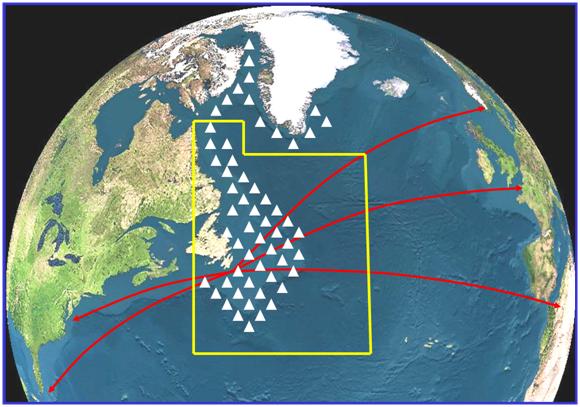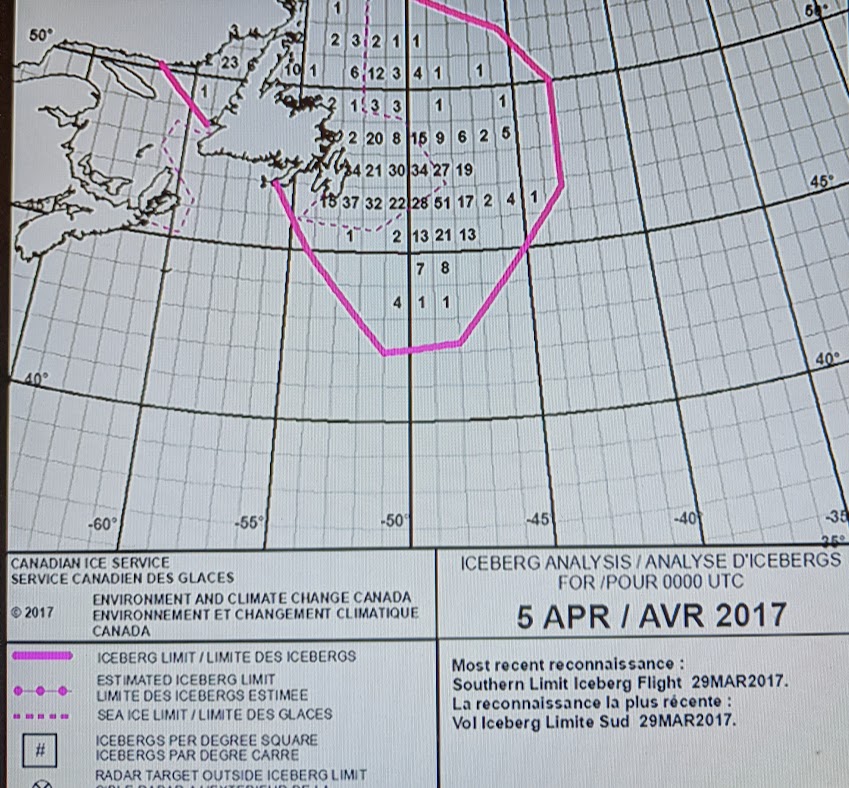
Consider the recent article by Fendrock, M., Condron, A., and McGee, D. “Modeling Iceberg Longevity and Distribution During Heinrich Events.” Paleoceanorgraphy and Paleoclimatology – 17 May 2022
In their abstract, the authors of the above paper explain: “During the last glacial period [when the North Pole was in Hudson Bay until about 12,000 years ago], the Laurentide ice sheet discharged large numbers of icebergs into the North Atlantic. These icebergs carried sediments that were dropped as the icebergs melted, leaving a record of past iceberg activity on the floor of the subpolar North Atlantic. Periods of significant iceberg discharge and increased ice-rafted debris (IRD) deposition, are known as Heinrich Events. [We might assume these were pole shifts.] These events coincide with global climate change, and the melt from the icebergs involved is frequently hypothesized to have contributed to these changes in climate by adding a significant volume of cold, fresh water to the North Atlantic…. Consistent with proxy evidence, the ocean must be several degrees colder than temperatures estimated for the Last Glacial Maximum in order for icebergs to travel the distance implied by Heinrich Layers.”
In plain English, the authors conclude that because the data shows the icebergs traveled very far from the polar region before melting and dropping their sediment, that ocean temperatures must have been several degrees colder than the already cold “ice-age” assumed temperatures they had in mind. All other evidence they cite suggests that North Atlantic surface water temperatures at the last glacial maximum [when the North Pole was in Hudson Bay] were colder than today by just 2-3 degrees C – about 4.5 degrees Fahrenheit. Reading deeper into their research paper, the authors state that sediment analysis shows icebergs coming from the area of the Hudson Straight in NE Canada all the way to the coast of Western Europe (presumably France, Spain, and Portugal) before rotating up the coasts towards Iceland before they finally melted. Icebergs today typically melt within a few hundred miles of Eastern Canada.


No iceberg sighting has ever been made below 50 degrees North Latitude and east of 15 degrees East Longitude (never within 300 miles of France, Spain, or Portugal.) Only five times in recorded history have icebergs been sighted within 500 miles of the coasts of these countries.
The authors explain icebergs reaching Western Europe by suggesting the ocean was 3.5 degrees Centigrade (6.3 F) colder than previously expected, or about 6 degrees C/10.8 degrees F colder than today. Under reasonable “ice age” conditions with North Atlantic Ocean temperatures where all other data puts it – just a few degrees colder than today – melting icebergs would not last long enough to reach the coast of Western Europe to drop sediments from still unmelted icebergs where the sediments have actually been found, so these authors suggest a much, much colder ocean to explain icebergs melting so far away from their source.
Ben Davidson commented on this in a video called “6000-Year Cycle Ice ‘Mystery'” on May 23, 2022 – “The waters can get much, much colder. But that’s not the good explanation for the iceberg distribution. It’s more like someone jerkingly tilted the world, and inertially tossed the broken sea ice to shockingly lower latitude. Then again, variable geophysical latitude isn’t exactly one of the tools in their toolbox, which is why they ended up suggesting what truly are impossibly cold water temperatures. The reality is actually slightly scarier.” During a pole shift catastrophe, we would expect momentum to make the waters of the Atlantic to crash into (and over) Western Europe before sloshing back to the west. Any icebergs caught up in the tsunamis would obviously spread over a vastly extended range, and it wouldn’t require a much colder ocean than all other evidence suggests.

